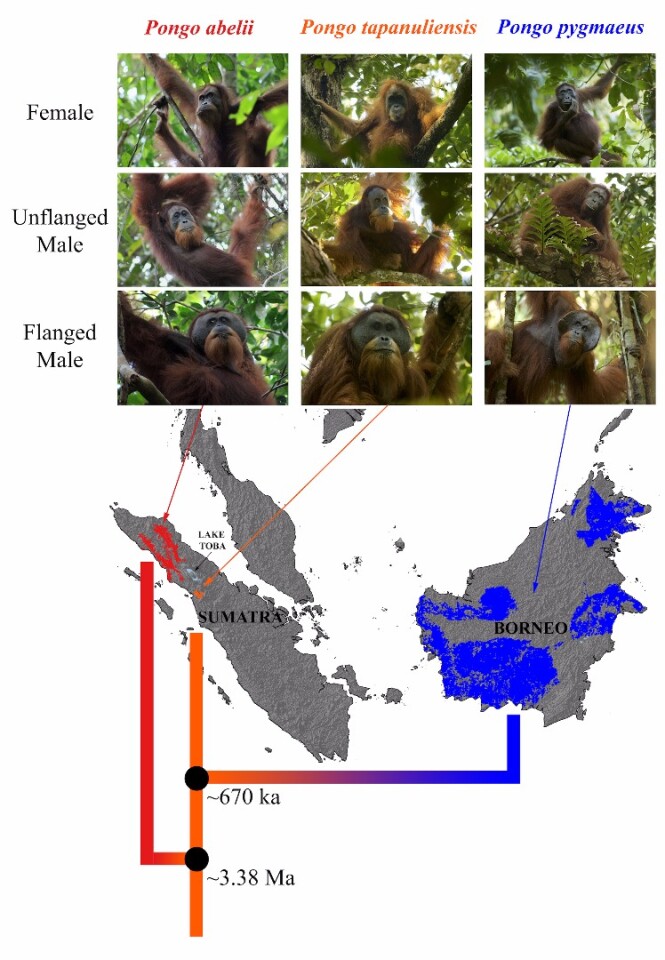An international team of scientists has identified a new species of orangutan, living in an isolated part of North Sumatra, Indonesia. Dubbed Pongo Tapanuliensis, the population was discovered 20 years ago, but it's only after comprehensive studies of the animals' genomes and skull morphology that scientists were able to confirm it as a distinct species. And unfortunately, it's already critically endangered.
In 1997, a team of Australian researchers discovered an isolated population of orangutans in the Tapanuli districts of North Sumatra, and it was assumed the animals belonged to one of the two known species: Pongo abelii, endemic to Sumatra, and Pongo pygmeaeus of the neighboring island of Borneo.

But the first inklings that these orangutans weren't quite what they seemed came from the skull of an adult male who died in 2013. Scientists from the University of Zurich compared the skull to those of 33 adult males, and found consistent differences in the teeth and other parts of the face.
"We were quite surprised that the skull was quite different in some characteristics from anything we had seen before," says Matt Nowak, co-author of a study describing the new species.
Computer models of their history suggests that the Tapanuli population has been completely isolated from other groups for at least 10,000 to 20,000 years. To investigate the find, the researchers conducted an extensive DNA study of the orangutans, sequencing the genomes of 37 individual animals. The results confirmed their observations, with another surprising revelation: not only did they uncover three very old evolutionary lineages, but the newly discovered population was the oldest.
"The oldest evolutionary line in the genus Pongo is actually found in Tapanuli orangutans, which appear to be direct descendants of the first Sumatran population in the Sunda archipelago," says Alexander Nater, co-author of the study.
Tragically, the new addition to the hominid family is already on its way out. A recent survey suggests there are no more than 800 of the animals left, which means that the Tapanuli orangutan is the most endangered species of the great apes.
"It is very exciting to discover a new great ape species in the 21st century," says Michael Krützen, principal author of the study. "All conservation efforts must focus on protecting the species' environment."
The research was published in the journal Current Biology.
Source: University of Zurich





